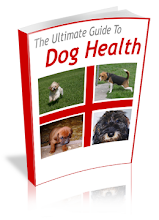
Dear Alex,
Well not quite red wine for your dog, but that will make more sense it a minute as you read this.
Hope you are well and managing to smile. We can never smile too much can we?
I wanted to answer a question I recently got from Anthony Taylor from Annandale-on-Hudson in York. It's a good question so thank you Anthony.
Anthony writes;
"Dear Sharda,
I have heard and read a lot recently about the benefits of Resveratrol for humans and now for out pets. What about Resveratrol for my dog Edgar?
Thank you.
regards, Anthony John Taylor."
Well , I'll be brief as I can.
RESVERATROL is the buzz word nowadays; everyone is talking about it - from OPRAH to 60 MINUTES. RESVERATROL is a "natural" antioxidant that is commonly found in many plants. RED WINE, peanuts, grapes and blueberries are some of its rich and popular sources.
Though red wine has been known to have health benefits for many years, it was in 1992 that it was recommended that probably THE SECRET of these BENEFITS lies in increased Resveratrol content in RED WINE.
The interest in its researches gained momentum when it is identified that this wonder nutrient in red wine MIGHT BE THE ANSWER to the French paradox that brings into light the question of fewer heart diseases of French people as compared to Americans, while the former consumes a diet higher in fats than the latter.
Researches revealed that this AMAZING ANTIOXIDANT helps in breaking down the stored fat, deposited in the white adipose tissue of your body as the fat is metabolized by the liver.
Whilst not yet totally proven in adults, is it theorized that Resveratrol has many very beneficial effects on both HUMANS AND OUR PETS
I had a look around and there are several Resveratrol options for dogs and THIS WAS THE BEST I could find to date.
PETIPAAWS ALL NATURAL PET SUPPLEMENT
PETIPAAWS supplement with Resveratrol is a premium, clinically-tested supplement that claims to promote overall health at all stages of your dog or cat's life.
PETIPAAWS is ideal for dogs & cats that are older, or who are consuming only commercial dog food or home cooked diets.
PETIPAAWS helps;
* Combats aging
* Helps reduce allergies
* Helps manage arthritis
- PETIPAAWS promotes a healthy immune system
- Regenerates your pets internal health & wellness
- Relieves sleep disorders
- Enhances alertness and cognition
- Increases energy and playfulness
- Improves overall skin and coats.
PETIPAAWS provides essential vitamins & minerals to maintain nutrient balance and delivers antioxidant support through Resveratrol.
Resveratrol is an extract from red wine that has been clinically proven to combat the aging-process, promote heart health, and maintain a healthy weight with it's antioxidant power.
The ingredients in PETIPAAWS are essential nutrients for life.

They are involved in many complex processes such as growth, energy production, digestion, reproduction, blood clotting, cell protection, and fighting infections.
Supplementing your dog's diet with vitamins and minerals is essential if you have a pet that is past the puppy stage, or is eating processed food, and also for pets that lead an active lifestyle.
PETIPAAWS has Glucosamine and Calcium- both of which are essential for preventing arthritis in an aging pet, and for rebuilding joint tissue, in the case of pets already experiencing joint distress and arthritis.
Research has found that vitamins and minerals can be beneficial at levels more than the minimum daily requirements, so even if you feed your dog a balanced diet, they can still benefit from supplementation, helping to ensure optimum health for your pet.
Other Benefits of using the PETIPAAWS dog formula include:
- Glossy, healthy coat
- Healthy skin
- Prevent and treat joint distress
- Promote bone growth
- Ensure proper clotting of blood
- Boosts Energy Levels
- Ensure good eyesight
- Promote good healing
- Ensure good immunity
PETIPAAWS Resveratrol is formulated for dogs at any stage of life.
Puppies, adult, and senior dogs have slightly different needs when it comes to maintaining dietary balance, however, this multivitamin with Resveratrol and Calcium will do wonders for a senior pet's overall health.
For those wanting to try it, I suggest you get a free trial if you can and see how you go.
Sharda Baker
PS. Finds out details about this new exciting pet supplement here.































